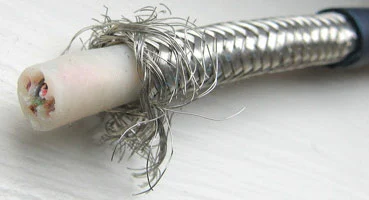Cables are the unsung hero in electronic engineering. Regardless of product type or application, they are an essential component for delivering power and transferring data.
What Causes Cable Failure?
 Cable failures, especially damages to cable sheathing, can disrupt the proper functioning of a device or equipment. Here are the most common types of cable damage and causes of insulation failure. Let’s look at what they are, why they occur, and how to prevent them so you can create better products and minimize defects.
Cable failures, especially damages to cable sheathing, can disrupt the proper functioning of a device or equipment. Here are the most common types of cable damage and causes of insulation failure. Let’s look at what they are, why they occur, and how to prevent them so you can create better products and minimize defects.
Animals & Pests
Rodents and other critters can chew through cables sheaths and the wiring inside. Even though these damages tend to affect a short length of the cable, so it’s not necessary to replace the entire cabling system, it’s often time-consuming to identify where the damage occurs. If your use case may expose equipment to natural pests, position and encase the cabling system in your design to ensure that small animals cannot reach them to prevent this type of cable damage from happening.
Material Aging
The aging process of the materials leads to embrittlement, cracking, withering, and failure of cable sheaths. Using the cable outside of the operating conditions it’s designed for can hasten the deterioration. The exposed conductors can lead to short circuits and even cause an electrical fire. Prevent this kind of insulation failure by selecting the appropriate sheathing materials for the conditions under which your product is designed to operate.
Excessive Heating
Degradation and premature failure of cable sheathing or insulation materials can occur when a cabling system operates under extreme temperatures. The heat can come from external sources (e.g., the sun), within the equipment (e.g., when a cable is overloaded), or both. Use cables appropriate for the workload and account for environmental factors during your design and testing process to prevent excessive heating.
Mechanical Damages
Poor design or installation can lead to tugging, excessive bending, abrasion, or pulling that will damage the cables, shortening their service life and impacting their performance. The stress can also lead to material fatigue and conductor strand breakage that will cause the insulation to perforate. To minimize these damages, create prototypes to test out the cable configurations so you can be sure that your wiring works as well in real life as it does on paper.
Chemical Damages
The cable jacket can swell or crack when exposed to oils or chemicals if you use materials that are not suitable for the application. The cracking and deterioration of the jacket, often exacerbated by extreme temperatures, exposes the cable’s shield to further damages. To prevent this type of cable damage, consider the conditions under which your product will be used, then choose the appropriate jacket and sheathing materials.
Moisture
High humidity and temperature fluctuations can cause condensation that hastens the deterioration of insulation materials. If a cable is buried, it may get damaged by groundwater. In fact, any cable exposed to water is susceptible to water treeing, which can create excessive electrical stress and cause the sheathing to crack. Consider the conditions under which the cables are used and create watertight seals around them before closing them up.
Electrical Overloading
Overheating occurs when too much load is placed on a cable, e.g., when it’s underrated for the application. To avoid this type of cable damage, choose cables rated for the intended usage. Also, conduct extensive testing to ensure that the cabling system is indeed capable of handling the load it’s designed for.
Building Reliable Cable Assemblies with JEM Electronics
A piece of electronic equipment is only as good as its weakest link. Choosing the right cables, designing the appropriate protective mechanism, and installing the cables correctly can help prevent many types of cable damage and insulation failure so you can create a more durable and reliable product.


